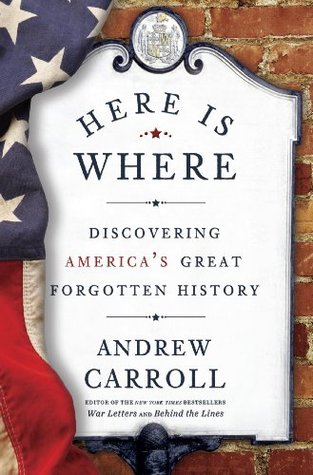More on this book
Community
Kindle Notes & Highlights
Read between
October 6 - October 12, 2021
California law gave doctors wide discretion in deciding who was eligible, and the labels “idiot,” “imbecile,” and “moron” were actual medical categories determined by intelligence tests. Idiots were a mental age of one to two, imbeciles three to seven, and morons eight to twelve.
Sanitizing history prevents us from seeing the warning signs of another Haun’s Mill, Mountain Meadows, or Rock Springs. These incidents occurred so long ago they’re almost unreal now, and the idea that similar massacres and riots could take place in our own time seems impossible. Such atrocities always do—right up until the moment they happen again.
Genuinely good intentions drove many Americans to lobby for a dry USA, free of booze-related crimes. But this idyllic, sober paradise was not to be. In its wake, Prohibition left thousands dead, either burned alive in home-still explosions or poisoned by denatured alcohol. Drug use soared. Political corruption grew rampant, exacerbated by an increasingly formidable Mafia syndicate that was once little more than a loose affiliation of street thugs.
the Bill of Rights originally applied only to the federal government; states weren’t bound by it.
Fatal accidents happen, but very rarely. On average, twenty-six people are killed by elevators each year (car crashes account for the same number every seven hours), and repairmen are the most likely victims.
President Woodrow Wilson’s administration, like its European counterparts, refused to acknowledge the mounting health crisis lest it dampen the country’s wartime morale. Early proposals to quarantine troops were rejected, and massive patriotic gatherings went on as planned, despite evidence that the disease was highly transmissible. On September 28, 1918, some 200,000 people came together for a Liberty Loan rally in Philadelphia. Within three days, every hospital bed in the city was full.
October 1918 was the epidemic’s deadliest month. October 1918, in fact, remains the deadliest month in American history. Influenza killed two hundred thousand men, women, and children in thirty days, and the population in 1918 was a mere third of what it is today.
Spanish flu went on to kill 675,000 Americans and at least 50 million people overseas. Other estimates put the global tally at twice that,
Today, approximately 40 percent of Americans are cremated. (To put this in a global context, it’s 69 percent in Canada, 72 percent in England, and 99 percent in Japan, the highest among industrialized nations.)
(In one of history’s greatest “what if?” moments, at the height of the Cuban Missile Crisis, the president’s senior circle of military advisors unanimously recommended bombing Cuba, and Kennedy might well have followed their counsel if he hadn’t recently read The Guns of August, Barbara Tuchman’s Pulitzer Prize–winning book about the events that led up to World War I. Kennedy became convinced that launching air strikes would provoke a Soviet response and cause a domino effect resulting in another world war.
Although owned and managed by the city, Hart Island is a cemetery of national significance. It is the largest potter’s field in the United States. “I think the number might actually be closer to one million, if not more,” Melinda says, “and almost half of them are children under five years of age. It’s incredibly sad.” An estimated twelve hundred interments take place each year. Adults are buried in pine boxes stacked three high, twenty-five across, two rows per trench. For babies, the coffins are five high and roughly twenty across in a single row.
Madison Square Garden, the New York Public Library, Washington Square Park, and the luxurious Waldorf-Astoria hotel were all built over “paupers’ burial grounds,” as they were also called.
At Hart Island, bodies are buried for twenty-five years, and then the bones are dug up and bunched together to make room for the newcomers.
(Between 1837 and 1855, Santa Anna became president of—and was exiled from—Mexico three times. He temporarily retired to Staten Island, New York, where he imported a sweet, sticky substance from the Mexican sapodilla tree that inventor Thomas Adams turned into a popular confection called Chiclets. Before dying in 1876, Santa Anna, conqueror of the Alamo, helped introduce chewing gum to America.)
More than twenty-five thousand Navy and Army Air Corps troops were killed within the United States during World War II, mostly while testing new aircraft, training other airmen, or flying coastal patrols. These stateside losses represent one out of every sixteen U.S. fatalities in the war, and yet they’re hardly ever acknowledged.
At its best, history nurtures within us humility and gratitude. It encourages respect and empathy. It fosters creativity and stimulates the imagination. It inspires resilience.


